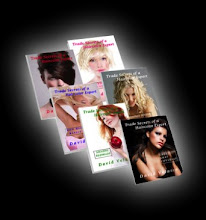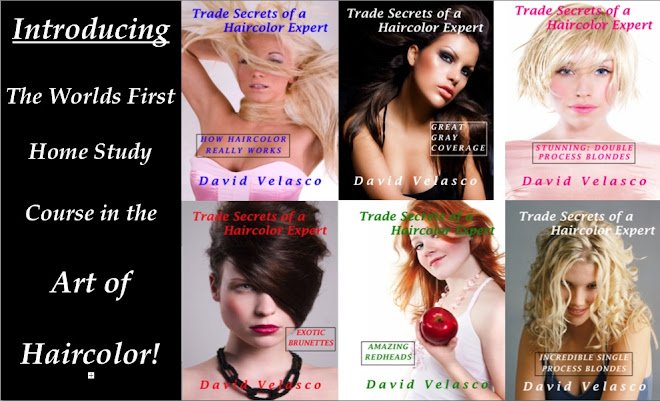

Note: This procedure applies to clients that are heavily highlighted with lightener (Bleach). If a client is just highlighted with a tint the cautions in this artical are not necessary.
When taking a client from heavy lightened highlights to a Double Process Blonde, you must be very careful not to over-lighten the already lightened hair or your client will get major breakage. The following 6 step proceeder is how I recommend handling this situation.
6 Steps to a Beautiful Double Process Blonde
1) Bleach-out the re-growth area (virgin hair) to your desired prelightened shade, as you would do a touch up situation (don’t tone yet).
2) Dry under a cool dryer.
3) Go back with foil and weave out the dark hair and bleach it separately (this can be a pain, but do the best you can).
4) When the dark hair inside the foils becomes the desired pre-lightened shade, take the client to the shampoo bowl and remove the foils rinsing all the hair with water.
5) Next, while at the shampoo sink and with the hair wet, run a mild bleach solution through the entire head just for a minute or two. This will freshen the old highlights and prepare them to better accept the toner.
6) Shampoo out the lightener and use an anti-oxidation treatment to neutralize any lightener residue that may be left in the hair before toning.
Dry Hair Before Toning.
At this point, the hair should be dried (use a cool dryer only) before the toner is applied. Check to see if the bleach-out is even. If it is not, go back and spot bleach the areas that need to be lighter.
For this Double Process Blonde I used:
Bleach: Clairol Born Blonde w/3 activators & 2o volume H2O2
Bleach-out on re-growth 40 Min.
Toner: Wella Color Touch 3/4-10/73 & 1/4-9/73
Toner Timing: On for 1 min. only
IF THE BLEACH-OUT IS NOT ACCEPTABLE AT THIS
POINT, DO NOT PROCEED.
GO BACK AND CORRECT THE BLEACH-OUT.
Haircolor Secret
IN DOUBLE PROCESS BLONDING, YOUR FINISHED PRODUCT IS ONLY AS GOOD AS YOUR BLEACH-OUT.
This lesson is an excerpt from my best selling book "Stunning Double Process Blondes" in the “Trade Secrets of a Haircolor Expert” Home Study Course. If you would like more information…
Click Here:http://www.haircolortradesecrets.com/blondes-double-proccess.htmi






 +
+
 +
+








